| Field | Case Information |
|---|---|
| Date of Incident | October 3, 1997 |
| Region and Location | Blanton, Florida |
| Forensic Files Case | Sharper Image, Season 12, Episode 1 |
| Victim | Sharra Ferger |
| Suspects | Gary Ray Cochran, Steve A. Cannon, Jack Hubble, Dale Morris |
| Culprit | Gary Ray Cochran, Steve A. Cannon |
| Type of Crime | Abduction, assault, murder |
| Modus Operandi | Lured and assaulted the victim |
| Forensic Evidence | Bite-mark, DNA evidence |
| Forensic Techniques Used | Bite-mark analysis, DNA analysis, Image enhancement |
| Charged For | First-degree murder |
| Punishment | Life in prison without parole |
| Where is Now | Incarcerated in Florida’s prison system |
Summary of Sharper Image Forensic File Case of Sharra Ferger
On October 3, 1997, a nine-year-old Sharra Ferger was abducted from her home in Blanton, Florida. Her mother, Karen Patti, a single parent working the night shift, had hired an acquaintance, Jack Hubble, as a live-in babysitter.
The next day, Sharra’s body was found in a field 300 yards from her residence, having been assaulted and stabbed multiple times, including several wounds on her skull. There was also a bite mark over her shoulder and 5 strands of hair with roots.
The first suspect– Babysitter.
The investigation began with Jack Hubble, the last known person to see Sharra alive. The main reasons for suspecting him are:
- There was no sign of forced entry, and
- Hubble’s odd behavior in the 24 hours before Sharra’s death.
However, forensic evidence, including DNA and bite-mark analysis, excluded Hubble as a suspect, and he was released after five days in custody.
The second suspect– a Neighbor.
Attention then turned to Dale Morris, a neighbor who lived down the street. A forensic odontologist, based on a partial bite mark, identified Morris as responsible for the bite mark on Sharra’s shoulder.
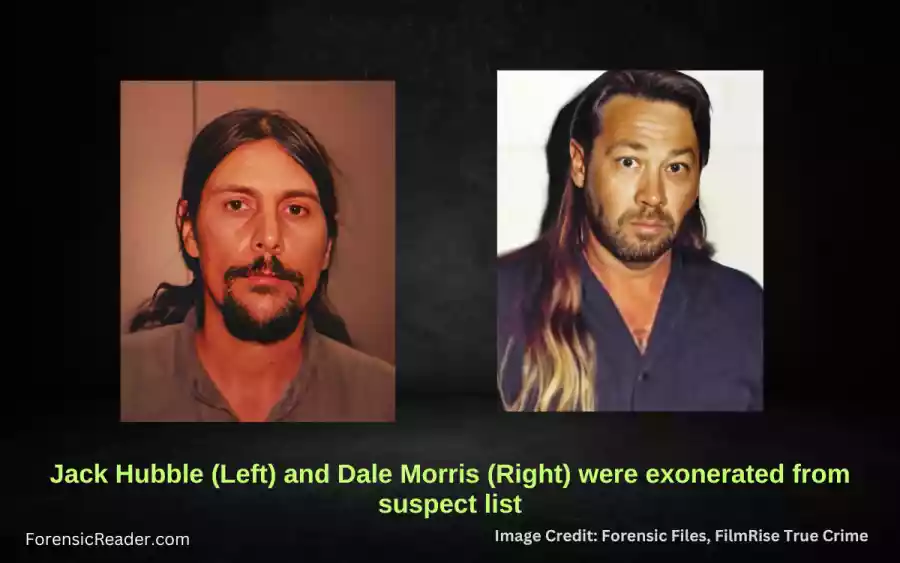
The prosecution filed the case. Morris was charged with first-degree murder. But another forensic technology contradicted the previous expert opinion. This was when digital photo enhancement technology by NASA clarified the bite-mark photographs, revealing two complete bite marks that did not match Morris’s teeth. Morris was later exonerated from all charges.
Investigators have no way to go and the case went cold.
But after six months, investigators re-interviewed people in Sharra’s neighborhood looking for any possible leads. And they got one, Sharra’s uncle, Gary Cochran.
Gary had been with Sharra at a neighborhood carnival on the afternoon of her murder. Moreover, his alibi was found to be false.
But there was more evidence against him. He had a habit and was known for biting people. So, investigators took a mold of Cochran’s teeth.
Forensic odontologist Dr. Lowell Levine conclusively identified Cochran as responsible for the bite marks on Sharra’s shoulder.
But still no match for the DNA from hair. This means he had an accomplice.
A tip from an informant led investigators to 18-year-old Steve Cannon, a friend of Cochran’s. Cannon initially lied that he doesn’t know Sharra. Later, he was known to be the ex-boyfriend of Sharra’s older sister, Crystal.
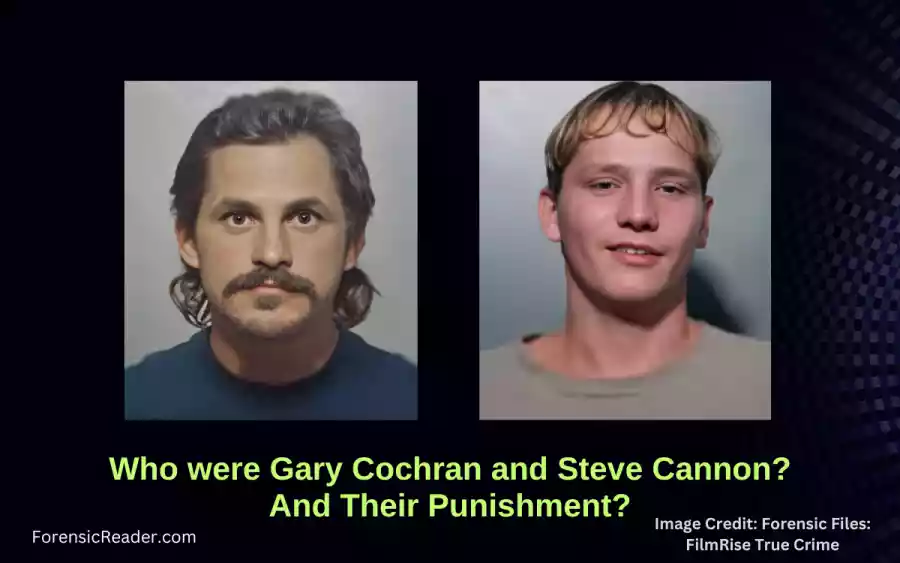
Match for DNA that closes the case.
A saliva sample from Steve matched the DNA from hairs found on Sharra’s body.
That’s what really happened. Based on forensic evidence and eyewitness statements, prosecutors believe:
- Cochran and Cannon, high on drugs and alcohol, entered the Ferger home through a broken side door.
- They took Sharra to a nearby field, where she fought back, pulling Cannon’s hair and being bitten by Cochran.
In September 2005, Gary Cochran and Steve Cannon were tried and convicted of first-degree murder. Cochran pleaded guilty to avoid the death penalty, while Cannon’s conviction was based largely on the testimony of a jailhouse informant. Both were sentenced to life in prison without parole.
Recent Developments to Case. Recent DNA testing in February 2021 showed DNA inside Sharra didn’t belong to her, Cannon, or Cochran, casting doubt on Cannon’s conviction. Despite the resentencing in September 2021, Cannon’s attorneys were preparing a motion to vacate the conviction and will request a new trial in light of the new DNA results. However, still no news on it.
Who was Sharra Ferger?
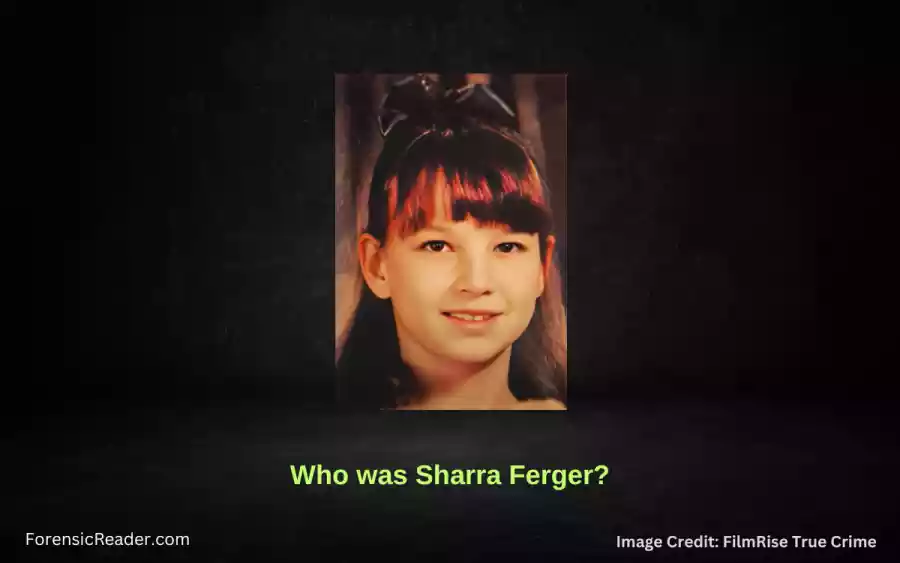
Sharra Ferger was a nine-year-old girl from Blanton, Florida who was a victim of Gary Cochran and Steve Cannon. She was raised by her single mother, Karen Patti.
Relationship with her Mother:
- Karen worked hard to provide for her children, often working night shifts to make ends meet.
- Strong Bond: Their bond was strong, and Sharra’s mother was dedicated to giving her a happy and loving home.
The Tragedy:
- Abduction: On the night of October 3, 1997, Sharra was abducted from her home.
- Discovery: Her body was found in a field 300 yards from her residence the next day.
Who were Gary Cochran and Steve Cannon? And Their Punishment?
A. Gary Cochran
Gary Cochran was Sharra Ferger’s uncle. He had a reputation in the neighborhood, especially for his odd behavior of biting people.
Connection to the Crime:
- His alibi for the day of the crime was found to be false.
- The most damning evidence against him was the bite mark on Sharra’s shoulder.
- Past Criminal Record: spent some time in Pasco County Detention Center Land o’Lakes, for drug-related crime.
Punishment: In September 2005, Cochran pleaded guilty to avoiding the death penalty. He was sentenced to life in prison without parole.
Recent Developments: Despite his conviction and plead guilty, new DNA testing in February 2021 showed DNA inside Sharra that didn’t belong to her, Cannon, or Cochran. This has cast doubt on his roles in the case and whether there was a third person or not.
B. Steve Cannon
Steve Cannon was an 18-year-old friend of Gary Cochran’s. He was connected to the Ferger family and boyfriend of Sharra’s older sister, Crystal, and had even been Sharra’s babysitter at one point.
Connection to the Crime: The saliva sample matched the DNA from hairs found on Sharra’s body.
Punishment: In September 2005, Steve Cannon was tried and convicted of first-degree murder. He was sentenced to life in prison without parole.
Recent Developments: Cannon’s attorneys have pointed out that recent DNA testing from the previously untested r*pe kit excludes Cannon as the source of the DNA. Based on that his attorneys are preparing a motion to vacate the conviction and are requesting a new trial.
3 Reasons Why Gary Cochran and Steve Cannon Might Killed Sharra Ferger
These are the three reasons:
1. Intoxication and Impaired Judgment
- Drugs and Alcohol: On the night of the murder, both Cochran and Cannon were under the influence of drugs and alcohol. They were seen drinking in a local bar and had bought crack cocaine.
- Impaired Decision-Making: Their intoxicated state may have led to impaired judgment, erratic behavior, and a lack of control over their actions, contributing to the tragic events that unfolded.
2. Twisted Intentions and Connections to the Family
- Connection to Sharra’s Sister: Steve Cannon had previously dated Sharra’s oldest sister, Crystal, and may have had some unresolved issues or emotions related to the family.
- Attempt to Enter Crystal’s Room: The fact that they may have initially attempted to enter Crystal’s room before targeting Sharra suggests a possible connection between their intentions and their relationship with the family. It can also be some sort of revenge.
3. Opportunistic Crime
- Knowledge of the Broken Lock: Gary Cochran knew about the broken side door lock at the Ferger’s home, which may have provided an opportunity for them to enter the house.
- Opportunistic Targeting: The fact that they targeted Sharra, who was in the living room, may suggest that the crime was not premeditated but rather an opportunistic act driven by their intoxicated state and twisted intentions.
Similar Case: Rafael Garcia & Robert Huffman [Critical Maneuver] Forensic Files Case Study
Forensic Evidence Against Gary Cochran and Steve Cannon
| Evidence Type | Location | Significance in the Case |
|---|---|---|
| Bite-Mark Analysis | Sharra’s shoulder | Identified Gary Cochran, leading to his conviction. |
| DNA Analysis | Hairs found on Sharra’s body | Matched Steve Cannon’s saliva sample, implicating him in the crime. |
| Broken Side Door Lock | Ferger’s home | Gary Cochran knew about this broken lock, providing a potential entry point into the home. |
| Witness Testimony | Prison | Jailhouse informant’s testimony against Steve Cannon about a biting incident. |
| Vehicle Evidence | Car used to transport Sharra to the field | Linked to Cochran and Cannon. |
| Two different weapons | At the crime scene | Indicated the possibility of two perpetrators. |
| Lucis | Digital photo enhancement software | Sharpen the images leading to the discovery of two complete bite marks. |
Investigators and Experts With Their Roles
| Name/Title | Role in the Case |
|---|---|
| Stephen G. Porter | Lead investigator in the case, responsible for gathering evidence and interviewing suspects. |
| SGT. John Corbin | Homicide Detective |
| Thomas J. Hanlon | Defense Attorney of Morris |
| Forensic Odontologist Dr. Lowell J. Levine | Conducted the bite-mark analysis for Morris and others that identified Gary Cochran’s teeth marks on Sharra’s shoulder. |
| Barbara Williams, Image Content Technology LLC | Demonstrates the use of Lucis software and the enhancement of bitemarks. |
| Bruce Bartlett, Chief Assistant State Attorney | Provided testimony against Steve Cannon, describing how he and Cochran lured Sharra into a field. |
| Defense Attorney James Clark | Represented Steve Cannon, raising questions about the evidence and seeking a new trial based on recent developments. |
Forensic Analysis and Techniques Used in Case of Sharper Image Forensic Files
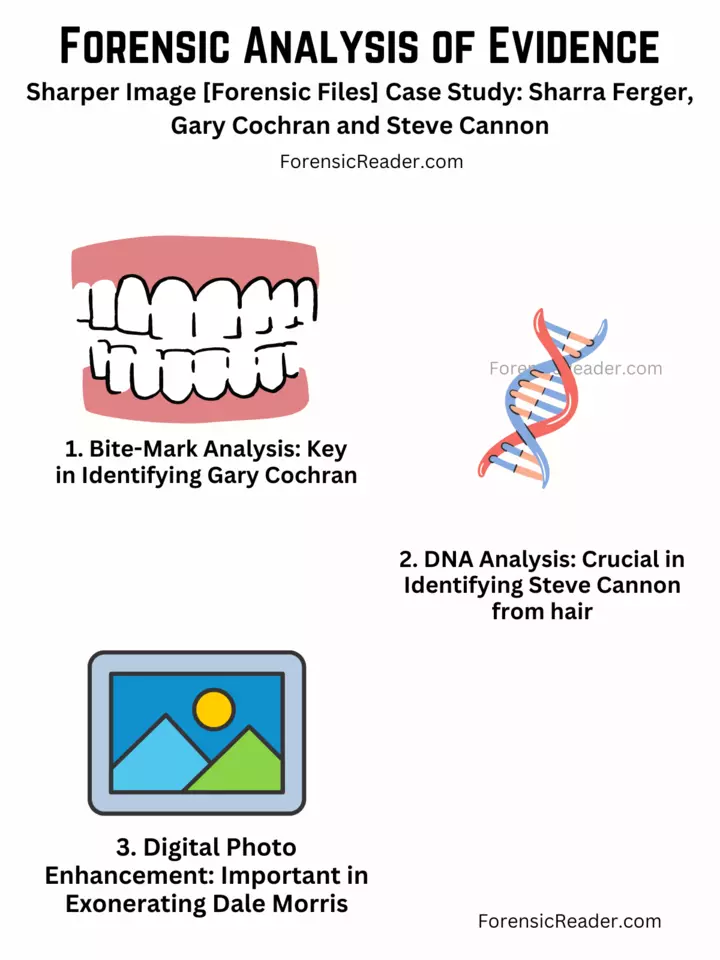
A. Bite-Mark Analysis: Key in Identifying Gary Cochran
When a bite mark is made, it leaves a dented or partially dented impression on the surface. Surfaces like skin not only have bite indentations but also have bruises.
So, by comparing the bite mark’s size, shape, and arrangement with dental records or molds, investigators can identify the person that made them.
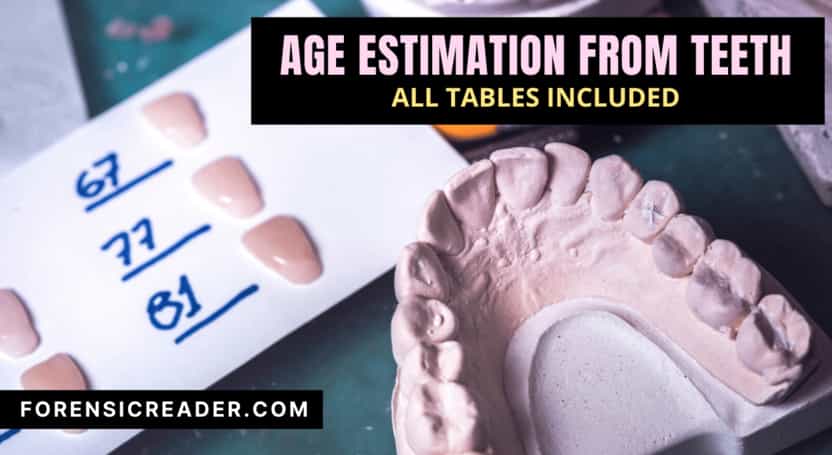
Science Behind Its Working:
- Arrangement: Teeth have unique arrangements, and the way they come together can leave a distinct mark.
- Comparison: The bite mark is compared to dental molds or X-rays of a suspect’s teeth.
Significance in the Case:
- Dr. Lowell Levine, a forensic odontologist, identified Gary Cochran’s bite mark on Sharra’s shoulder.
- The bite marks were also used to exonerate Morris.
- The use of Lucis software helped in enhancing the image and identifying two complete bite marks.
B. DNA Analysis: Crucial in Identifying Steve Cannon
DNA analysis involves extracting and analyzing genetic material to create a DNA profile. This profile can be compared to known samples to identify or exclude individuals.
Science Behind Its Working:
- Extraction: DNA is extracted from biological material like hair, blood, or saliva.
- Comparison: The DNA profile is compared to known samples or databases like CODIS (Combined DNA Index System).
- Recent Ways: Modern techniques like STR (Short Tandem Repeat) and Y-STRs analysis allow for highly specific comparisons.
Significance in the Case: In Sharra’s case, human hairs found on her body were analyzed, and the DNA matched Steve Cannon’s profile, implicating him in the crime.
C. Digital Photo Enhancement: Important in Exonerating Dale Morris
Digital photo enhancement involves manipulating an image to improve its quality, making it easier to analyze.
Science Behind Its Working:
- Sharpness: Enhancing the edges and details of an image.
- Contrast: Adjust the difference between the light and dark areas.
- Other Aspects: Brightness, saturation, and noise reduction can also be adjusted.
- Examples of some software: Adobe Photoshop, GIMP, Lightroom, DxO PhotoLab
Significance in the Case:
- NASA recommended using Lucis software to enhance the bite-mark photographs.
- The digital enhancement clarified the images, leading to the discovery of two complete bite marks, which played a crucial role in exonerating Dale Morris.
The case uses Imaging Technology: Nice Threads [Forensic File Case]: Eric Hayden and Dawn Fehring
Is Gary Cochran and Steve Cannon Really Innocent? My Expert Opinion
Unmatched DNA. Recent testing revealed DNA that doesn’t match Cochran or Cannon. But as a forensic expert, the presence of unmatched DNA does not necessarily exonerate the convicted.
It’s natural to wonder if a mistake was made. But let me assure you, it’s not that simple:
- DNA Can Be Tricky: Unmatched DNA doesn’t automatically mean they are innocent.
- Contamination Possibility: We must consider if the DNA was properly handled or accidentally transfer.
A Closer Look: Why I Still Have Questions
As someone from a forensics background, like me, I still have questions:
- The Bite-Mark Still Stands: The analysis that identified Cochran hasn’t been refuted.
- The Complexity of DNA: DNA is complex, and unmatched DNA doesn’t erase other evidence.
Thus, we need not focus only on the newer evidence over the older ones. But, new DNA evidence has added uncertainty.
Final Thoughts
I know this case has touched many hearts, and the quest for truth can be painful and confusing. But please know:
I Share Your Concerns: I, too, want to ensure that justice is served.
I Believe in Science and Justice. And I only said what I think is right.
We Must Be Patient and Thoughtful: A rush to judgment helps no one.
General FAQs
Why is the new unmatched DNA evidence not enough to exonerate Gary Cochran and Steve Cannon?
The unmatched DNA raises questions, but it doesn’t automatically prove their innocence. There were other evidences such as bitemarks and even the plead guilty agreement by Cochran. Thus, one must consider all evidence, not the new DNA finding, including the possibility of contamination or secondary transfer.
What are the ethical considerations in reopening a case like this, years after the original convictions?
Reopening a case is majorly done when new evidence surfaced. There are both legal and ethical considerations. Legally, the pursuit of truth and justice is paramount when new evidence emerges. Ethically, the emotional toll on families and the potential impact on legal finality must be weighed.
What lessons can be learned from the Sharra Ferger case for future criminal investigations?
The Sharra Ferger case teaches us the value of every evidence, the limitations of forensic methods, and the need for continuous improvement in forensic science. Moreover, it reminds us that every evidence must be thoroughly examined, and the pursuit of truth must remain flexible and open to new insights and second opinions.
References:
- Watch the full case of Sharper Image on YouTube.
- Man guilty in girl’s assault case, slaying [Gainesville.com]
- New DNA evidence casts doubt on life sentence [Florida Police Department 6]
- Man says he’s innocent of murder; should prosecutors help? [Orlando Sentinel]
- Bitemark Evidence by Robert B.J. Dorion [Book]
- Forensic Odontology: An Essential Guide [Book]
- Forensic Casting Materials: How to Choose One For Different Surfaces?
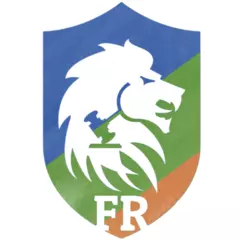
FR Author Group at ForensicReader is a team of Forensic experts and scholars having B.Sc, M.Sc, or Doctorate( Ph.D.) degrees in Forensic Science. We published on topics on fingerprints, questioned documents, forensic medicine, toxicology, physical evidence, and related case studies. Know More.

